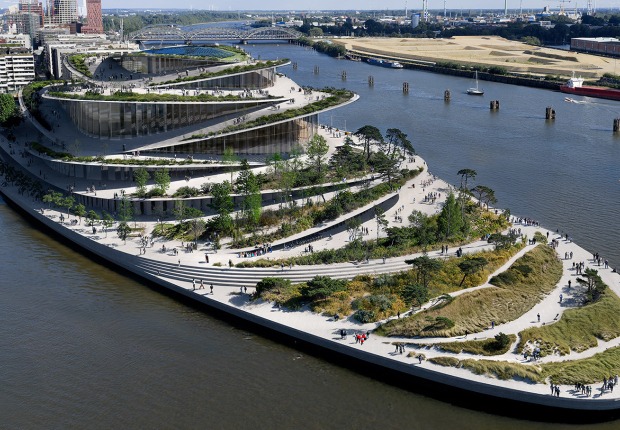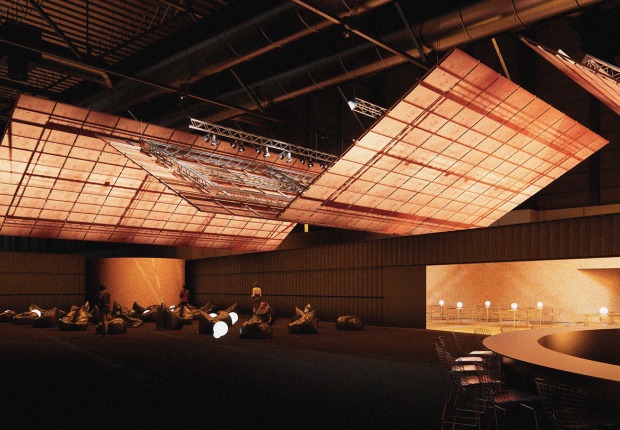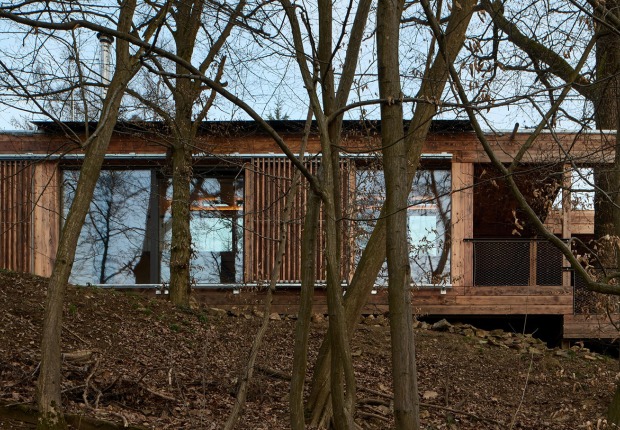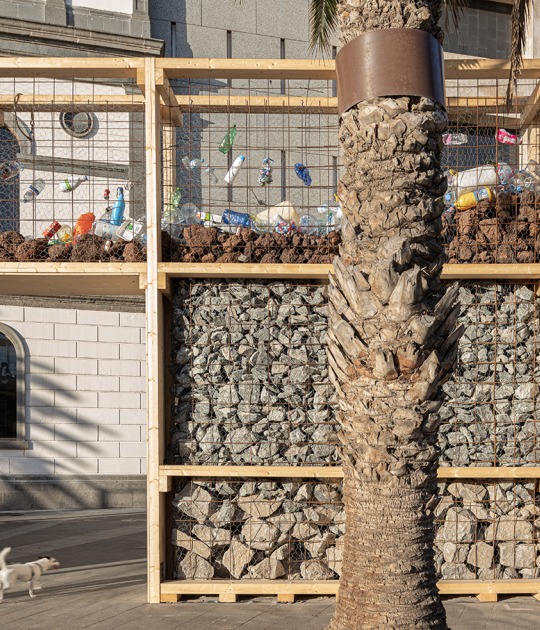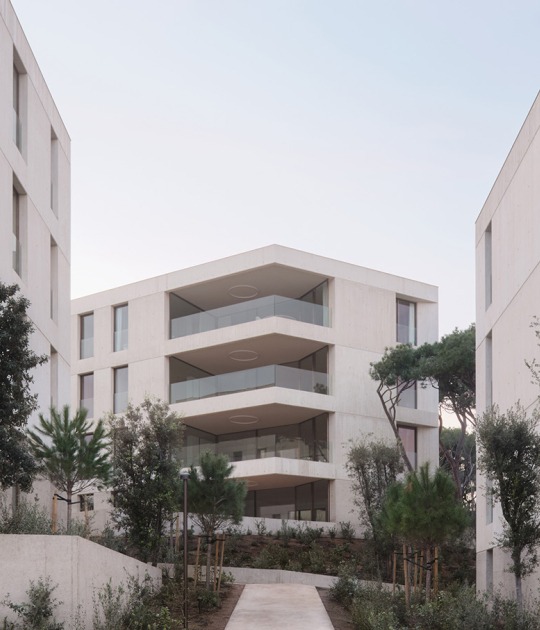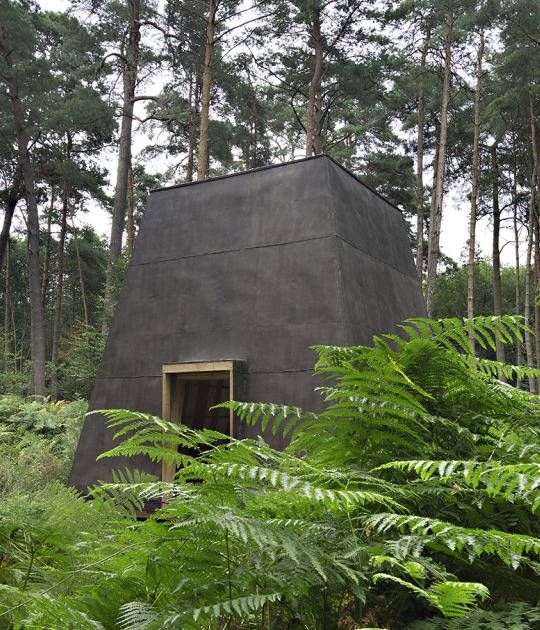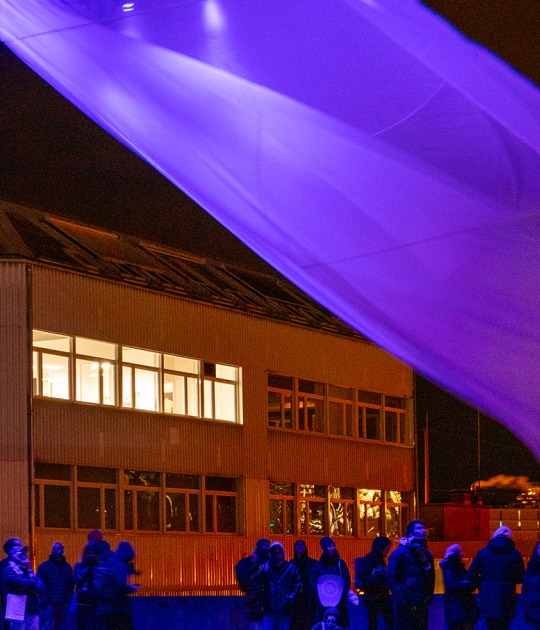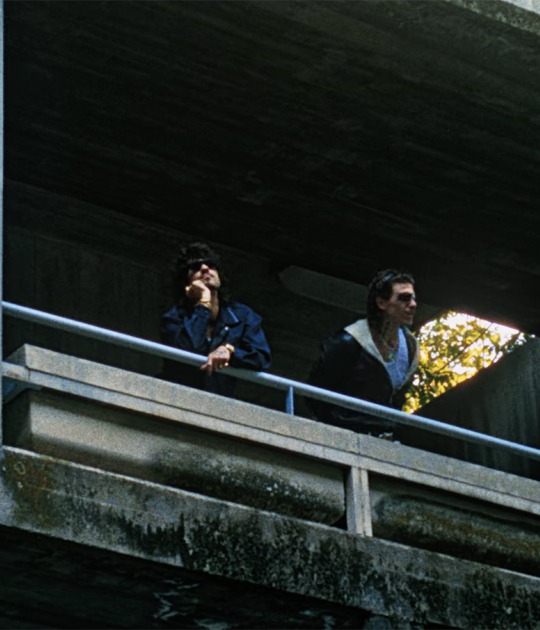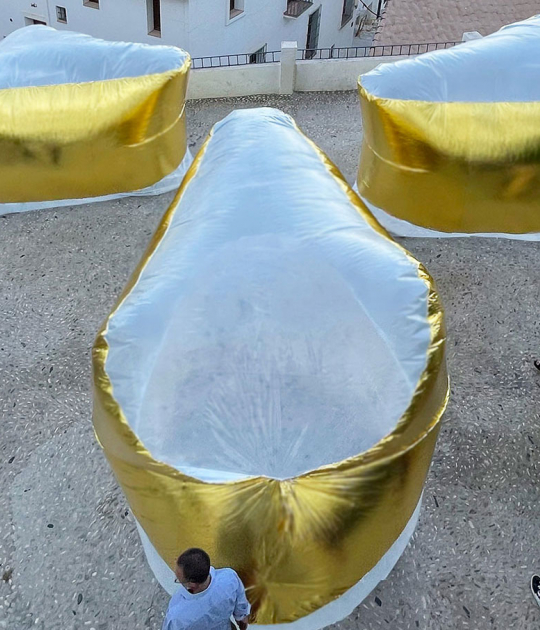![OB Space [NEMO] by Conjuntos Empáticos OB Space [NEMO] by Conjuntos Empáticos](/sites/default/files/styles/max_2600x2600/public/2025-08/metalocus_conjuntos-empaticos_maca_ob-space-neno_18_0.jpg?itok=9cYm2mFf)
Conjuntos Empáticos, together with MAca and OB Space [NEMO], create a soft architecture that presents itself as a technological creature learning to survive under the sun. Its reflective envelope mitigates heat and generates a gentle microclimate in a landscape scorched by summer, offering shade, coolness, and a habitable space that accompanies the radio project RadioScopio. Its authors conceive it as a constructed atmosphere that proposes a light, nomadic, and ecological form of domesticity—an alternative to entertainment infrastructures.
Unlike permanent architectures, OB Space [NEMO] does not anchor itself: it folds, moves, and disappears. Its portable and dismantlable character allows it to intervene in various landscapes without altering the terrain, activating environments through its luminous and performative presence. Its interior welcomes bodies, waves, and conversations. It invites gathering and rest, embodying a poetic critique of contemporary domesticity as a way of being in the world.
![OB Space [NEMO] by Conjuntos Empáticos](/sites/default/files/inline-images/metalocus_conjuntos-empaticos_maca_ob-space-neno_04.jpeg)
OB Space [NEMO] by Conjuntos Empáticos.
Project description by Conjuntos Empáticos
On the open esplanade of the Observatory Festival, amidst bushes and the sounds of the countryside, OB Space [NEMO] is installed, a nomadic and experimental node of mediation, listening, and collective relaxation. This pneumatic, translucent capsule takes shape with an organic, light, and scaly appearance, almost like a technological creature that has learned to survive in the sun. This soft, temporary architecture, which accompanies RadioScopio (the festival's radio project), is not presented as a closed object, but as a situation, a constructed atmosphere. Its envelope, composed of reflective scales, protects its inhabitants from thermal impact, generating a pleasant and cool microclimate in a natural environment scorched by summer. Instead of absorbing heat, it mitigates it. Its lightweight domesticity reduces the greenhouse effect and, through its small size and portability, offers an ecological alternative to entertainment infrastructure.
Unlike stable and permanent architectural models, OB Space [NEMO] is not anchored. It can move, retreat, disappear. Its nomadic capacity allows us to rethink the role of architecture in contexts of climate emergency, festivities, and community care. Like an organism designed for survival, OB Space [NEMO] is installed on the margins of the urban environment to activate the desire to be together, to share sounds, shade, water, and conversation.
![OB Space [NEMO] by Conjuntos Empáticos OB Space [NEMO] by Conjuntos Empáticos](/sites/default/files/styles/max_2600x2600/public/2025-08/metalocus_conjuntos-empaticos_maca_ob-space-neno_18_0.jpg?itok=9cYm2mFf)
This architecture doesn't impose itself; it adapts. It invites. It allows for the ephemeral interaction between bodies, radio waves, and natural elements. Its interior—inflated with air and protected by scales that respond to changes in light—generates a space of welcome and listening. People lie down, rest, and immerse themselves in conversations or radio programs while the wind stirs the exterior scales, drawing a constantly changing landscape.
The installation takes a critical and poetic view of contemporary domesticity: not as a collection of objects, but as a way of being in the world, of generating minimal affects that are resistant to heat, excess, and speed. OB Space [NEMO] has no fixed functions: it is a living room, a capsule, a lair, a listening place. An architecture designed to accommodate transitions.
![OB Space [NEMO] por Conjuntos Empáticos. OB Space [NEMO] por Conjuntos Empáticos.](/sites/default/files/styles/max_2600x2600/public/2025-08/metalocus_conjuntos-empaticos_maca_ob-space-neno_12_0.jpg?itok=0WnCVaMS)
The design strategies that make this possible are:
· Use of reflective and lightweight materials that actively respond to solar conditions and passively reduce energy consumption.
· Detachable and transportable construction, allowing relocation to different landscapes.
· Pneumatic structure that minimizes impact on the terrain and facilitates assembly without heavy machinery.
· Activation of the environment through its luminous, performative, and open presence.
· Proposal for a new hybrid architectural imaginary: halfway between the natural and the artificial, between refuge and stage.
OB Space [NEMO] does not aim to remain. Its vocation is not to inhabit time but to generate moments. Moments in which the body rests, sound floats, and technology becomes an ally of a planet that can no longer withstand heavy infrastructure. It's an architecture that learns from the fish: to move, reflect, survive, adapt, and disappear. A capsule for finding ourselves. A refuge for imagining futures. A space to breathe. A place to listen.
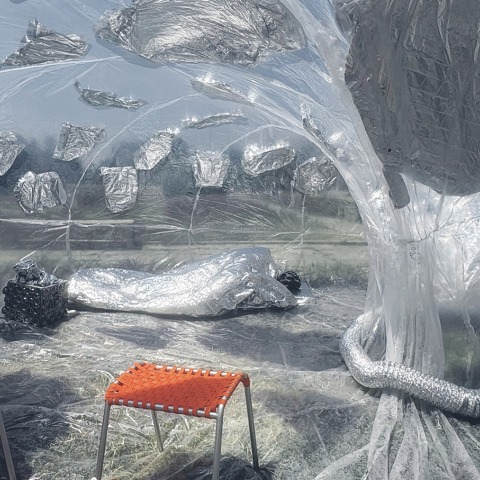
![OB Space [NEMO] by Conjuntos Empáticos. OB Space [NEMO] by Conjuntos Empáticos.](/sites/default/files/styles/mopis_news_carousel_item_desktop/public/2025-08/metalocus_conjuntos-empaticos_maca_ob-space-neno_02.jpeg?itok=ZSXjq9_7)
![OB Space [NEMO] by Conjuntos Empáticos. OB Space [NEMO] by Conjuntos Empáticos.](/sites/default/files/styles/mopis_news_gallery_first_deskop/public/2025-08/metalocus_conjuntos-empaticos_maca_ob-space-neno_17.jpg?itok=EXWe8c36)
![OB Space [NEMO] by Conjuntos Empáticos. OB Space [NEMO] by Conjuntos Empáticos.](/sites/default/files/styles/mopis_news_carousel_item_desktop/public/2025-08/metalocus_conjuntos-empaticos_maca_ob-space-neno_16.jpg?itok=uipPHcLn)
![OB Space [NEMO] by Conjuntos Empáticos. OB Space [NEMO] by Conjuntos Empáticos.](/sites/default/files/styles/mopis_news_carousel_item_desktop/public/2025-08/metalocus_conjuntos-empaticos_maca_ob-space-neno_18.jpg?itok=KfVsIkeE)
![OB Space [NEMO] by Conjuntos Empáticos. OB Space [NEMO] by Conjuntos Empáticos.](/sites/default/files/styles/mopis_news_carousel_item_desktop/public/2025-08/metalocus_conjuntos-empaticos_maca_ob-space-neno_19.jpg?itok=_JKReQ-l)
![OB Space [NEMO] by Conjuntos Empáticos. OB Space [NEMO] by Conjuntos Empáticos.](/sites/default/files/styles/mopis_news_carousel_item_desktop/public/2025-08/metalocus_conjuntos-empaticos_maca_ob-space-neno_01.jpeg?itok=u7LlFCtJ)
![OB Space [NEMO] by Conjuntos Empáticos. OB Space [NEMO] by Conjuntos Empáticos.](/sites/default/files/styles/mopis_news_carousel_item_desktop/public/2025-08/metalocus_conjuntos-empaticos_maca_ob-space-neno_03.jpeg?itok=4THhZU_g)
![OB Space [NEMO] by Conjuntos Empáticos. OB Space [NEMO] by Conjuntos Empáticos.](/sites/default/files/styles/mopis_news_carousel_item_desktop/public/2025-08/metalocus_conjuntos-empaticos_maca_ob-space-neno_04.jpeg?itok=5zwhiyok)
![OB Space [NEMO] by Conjuntos Empáticos. OB Space [NEMO] by Conjuntos Empáticos.](/sites/default/files/styles/mopis_news_carousel_item_desktop/public/2025-08/metalocus_conjuntos-empaticos_maca_ob-space-neno_05.jpeg?itok=_Sehqc6V)
![OB Space [NEMO] by Conjuntos Empáticos. OB Space [NEMO] by Conjuntos Empáticos.](/sites/default/files/styles/mopis_news_carousel_item_desktop/public/2025-08/metalocus_conjuntos-empaticos_maca_ob-space-neno_06.jpeg?itok=6NOJWvbd)
![OB Space [NEMO] by Conjuntos Empáticos. OB Space [NEMO] by Conjuntos Empáticos.](/sites/default/files/styles/mopis_news_carousel_item_desktop/public/2025-08/metalocus_conjuntos-empaticos_maca_ob-space-neno_07.jpg?itok=WPnf3GCJ)
![OB Space [NEMO] by Conjuntos Empáticos. OB Space [NEMO] by Conjuntos Empáticos.](/sites/default/files/styles/mopis_news_carousel_item_desktop/public/2025-08/metalocus_conjuntos-empaticos_maca_ob-space-neno_08.jpg?itok=G3fk3eHC)
![OB Space [NEMO] by Conjuntos Empáticos. OB Space [NEMO] by Conjuntos Empáticos.](/sites/default/files/styles/mopis_news_carousel_item_desktop/public/2025-08/metalocus_conjuntos-empaticos_maca_ob-space-neno_09.jpeg?itok=HZhvXZ6y)
![OB Space [NEMO] by Conjuntos Empáticos. OB Space [NEMO] by Conjuntos Empáticos.](/sites/default/files/styles/mopis_news_carousel_item_desktop/public/2025-08/metalocus_conjuntos-empaticos_maca_ob-space-neno_10.jpg?itok=QS3m7kmb)
![OB Space [NEMO] by Conjuntos Empáticos. OB Space [NEMO] by Conjuntos Empáticos.](/sites/default/files/styles/mopis_news_carousel_item_desktop/public/2025-08/metalocus_conjuntos-empaticos_maca_ob-space-neno_11.jpg?itok=PHa2a3vC)
![OB Space [NEMO] by Conjuntos Empáticos. OB Space [NEMO] by Conjuntos Empáticos.](/sites/default/files/styles/mopis_news_carousel_item_desktop/public/2025-08/metalocus_conjuntos-empaticos_maca_ob-space-neno_12.jpg?itok=mV-m5djD)
![OB Space [NEMO] by Conjuntos Empáticos. OB Space [NEMO] by Conjuntos Empáticos.](/sites/default/files/styles/mopis_news_carousel_item_desktop/public/2025-08/metalocus_conjuntos-empaticos_maca_ob-space-neno_13.jpg?itok=AKXVyRTT)
![OB Space [NEMO] by Conjuntos Empáticos. OB Space [NEMO] by Conjuntos Empáticos.](/sites/default/files/styles/mopis_news_carousel_item_desktop/public/2025-08/metalocus_conjuntos-empaticos_maca_ob-space-neno_14.jpeg?itok=4E-IO8TE)
![OB Space [NEMO] by Conjuntos Empáticos. OB Space [NEMO] by Conjuntos Empáticos.](/sites/default/files/styles/mopis_news_carousel_item_desktop/public/2025-08/metalocus_conjuntos-empaticos_maca_ob-space-neno_15.jpeg?itok=Po7h9_j_)
![Ground floor plan. OB Space [NEMO] by Conjuntos Empáticos. Plano de planGround floor plan. OB Space [NEMO] by Conjuntos Empáticos.ta. OB Space [NEMO] by Conjuntos Empáticos.](/sites/default/files/styles/mopis_news_carousel_item_desktop/public/2025-08/metalocus_conjuntos-empaticos_maca_ob-space-neno_20.jpg?itok=-9afdDTw)
![Elevation. OB Space [NEMO] by Conjuntos Empáticos. Elevation. OB Space [NEMO] by Conjuntos Empáticos.](/sites/default/files/styles/mopis_news_carousel_item_desktop/public/2025-08/metalocus_conjuntos-empaticos_maca_ob-space-neno_21.jpg?itok=enrNCbUZ)
![Axonometric. OB Space [NEMO] by Conjuntos Empáticos. Axonometric. OB Space [NEMO] by Conjuntos Empáticos.](/sites/default/files/styles/mopis_news_carousel_item_desktop/public/2025-08/metalocus_conjuntos-empaticos_maca_ob-space-neno_22.jpg?itok=GHn4BBfR)
![Pattern making. OB Space [NEMO] by Conjuntos Empáticos. Pattern making. OB Space [NEMO] by Conjuntos Empáticos.](/sites/default/files/styles/mopis_news_carousel_item_desktop/public/2025-08/metalocus_conjuntos-empaticos_maca_ob-space-neno_23.jpg?itok=WjZZ41sn)
